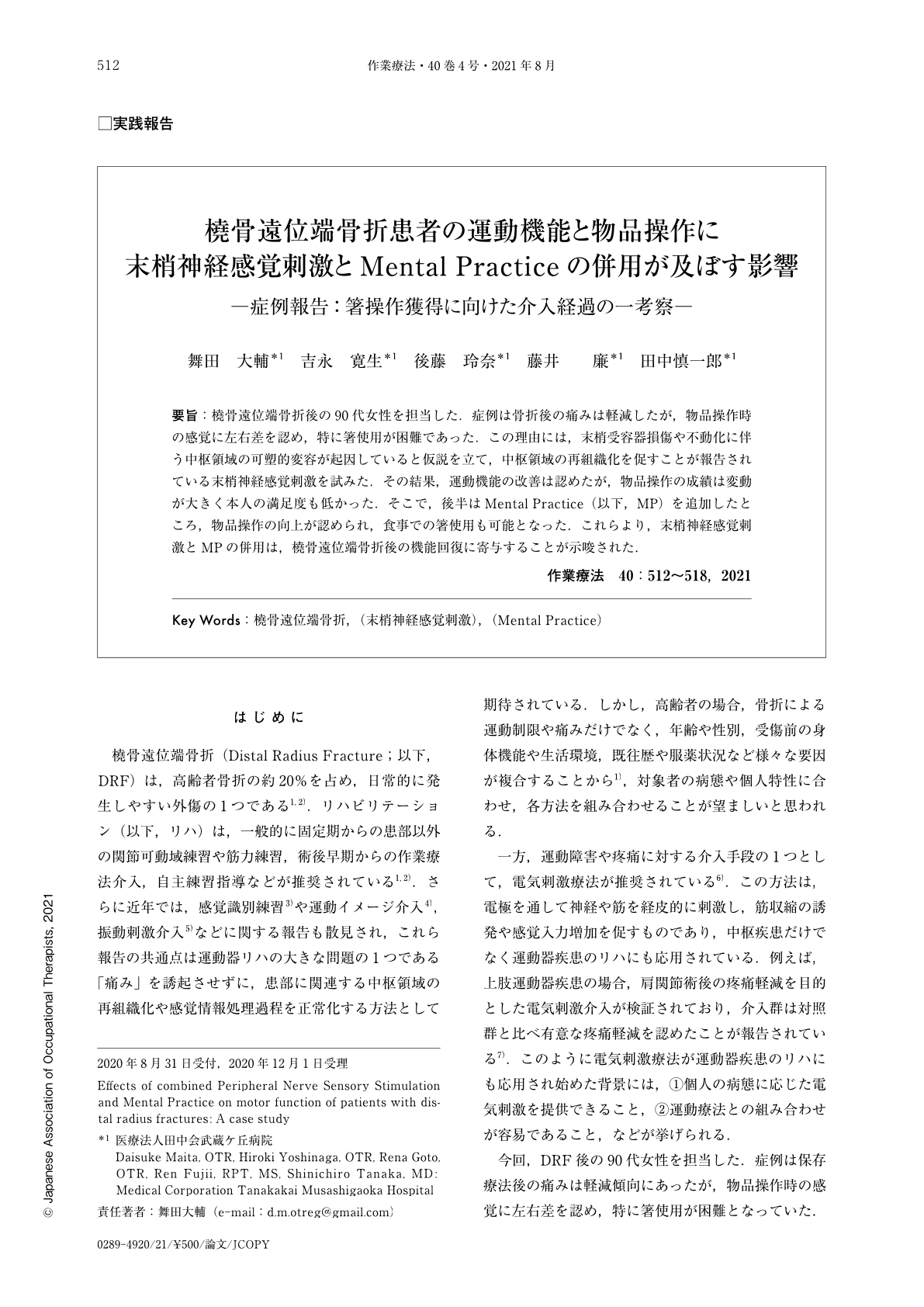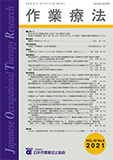Japanese
English
- 販売していません
- Abstract 文献概要
- 1ページ目 Look Inside
- 参考文献 Reference
- サイト内被引用 Cited by
要旨:橈骨遠位端骨折後の90代女性を担当した.症例は骨折後の痛みは軽減したが,物品操作時の感覚に左右差を認め,特に箸使用が困難であった.この理由には,末梢受容器損傷や不動化に伴う中枢領域の可塑的変容が起因していると仮説を立て,中枢領域の再組織化を促すことが報告されている末梢神経感覚刺激を試みた.その結果,運動機能の改善は認めたが,物品操作の成績は変動が大きく本人の満足度も低かった.そこで,後半はMental Practice(以下,MP)を追加したところ,物品操作の向上が認められ,食事での箸使用も可能となった.これらより,末梢神経感覚刺激とMPの併用は,橈骨遠位端骨折後の機能回復に寄与することが示唆された.
We treated a female in her nineties who sustained a distal radius fracture. Regarding patient progress, although post-fracture pain decreased, sensory differences between left and right sides were present during object manipulations. In particular, the patient had difficulty using chopsticks. For these reasons, we hypothesized that plastic transformation of the central region due to peripheral receptor damage and immobilization occurred. Thus, we attempted peripheral nerve sensory stimulation, which was reported to promote reorganization of the central region. As a result, although motor function improved, object manipulation exhibited little improvement. Therefore, Mental Practice (MP) was added to improve object manipulation, and the patient was able to use chopsticks at meals. These results suggest that combined intervention of peripheral nerve sensory stimulation and MP contribute to functional recovery after distal radius fracture.

Copyright © 2021, Japanese Association of Occupational Therapists. All rights reserved.


